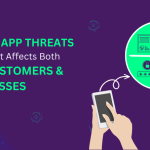Cybersecurity is about protecting yourself from hackers who exploit technology flaws to access data networks.
What are Social Engineering Attacks?
Social engineering is the act of tricking someone into giving up information or access to data networks. Perpetrators research their targets beforehand to find vulnerabilities.
Attackers may try to gain a victim’s trust and offer rewards in exchange for sensitive information or access to important resources.
Attackers utilize social engineering to abuse human psychology and gain illegal access to sensitive data, systems, and resources. These attacks involve tricking people into disclosing confidential information, compromising security, or making decisions that favor the attacker.
Social Engineering Attack types
Common social engineering attacks types are given below
-
Phishing Attacks
Among the many forms of social engineering attack types, phishing is one of the most common and dangerous to steal personal information, tricking users into thinking they’re interacting with a reputable third party. Phishing emails on mobile devices are harder to detect as the URL is less visible.
Creating fake mobile apps through impersonation can lead to the theft of private information, which may be used to commit fraudulent activities such as identity theft or unauthorized account access.
-
Spear Phishing
Spear-phishing is a type of targeted attack through malicious emails, with the goal of stealing confidential data or infecting devices with malware.
These attacks are successful because they use personalized messages to trick people. Attackers use psychological tactics like urgency and scarcity to pressure targets into acting without thinking.
The attack uses fake attachments or links to send malware, including fake mobile apps or websites that ask for sensitive data.
-
Smishing (SMS phishing) and Vishing (Voice Phishing)
Smishing is one of the Social engineering attack types where scammers use text messages to deceive people into giving away personal information or compromising their security. They often pretend to be legitimate organizations like banks or governments.
“Voice phishing” or “vishing” is when attackers use phone calls to pretend to be trustworthy organizations and trick users into giving out sensitive information. These attacks are often more convincing due to social engineering techniques.
Attackers may send urgent or important text messages that appear to be from a reliable source by using caller ID spoofing.
-
Whaling
“Whaling” is a type of phishing attack that targets senior executives by impersonating a legitimate email. It uses social engineering tactics to trick victims into taking actions such as initiating a money wire transfer.
Whaling attacks target high-value individuals to gain unauthorized access to accounts or confidential data. Attackers exploit flaws in mobile devices, apps, or communication channels and focus on senior positions, important information, or individuals with a lot of authority.
Attackers create convincing messages to trick targets, often appearing official from coworkers or superiors. If successful, they can steal information and compromise security, leading to serious consequences.
-
Baiting
Baiting attacks lure victims with bait to steal login info or spread malware. They don’t need technical expertise, so cybercriminals use them often.
Attackers use enticing offers or content to grab users’ attention, such as free app downloads, exclusive content, special discounts, or promotions. They spread these links through social media, emails, text messages, and QR codes in physical locations.
Cybercriminals use infected USB drives and hard drives as bait in attacks. They leave them in public places or send them by mail.
-
Piggybacking or Tailgating
Unauthorized entry can occur through piggybacking or tailgating, which is when someone enters a secure area without proper identification or clearance. Holding open a locked door for an unauthorized person is considered piggybacking.
Leaving a device unlocked or sharing login info can lead to unauthorized access. Pretexting tricks victims into giving sensitive info, leading to unauthorized access.
-
Pretexting
Pretexting attacks trick victims into sharing personal data. The attacker uses this to steal identities or launch further attacks. These Social engineering attack types exploit trust and are different from other types of attacks.
Pretexting attacks involve threat actors pretending to need specific information to verify a victim’s identity, but in reality, they steal it for identity theft or further attacks.
Scammers create believable personas to trick people into giving them money or personal information. They may steal data from HR or use malware to compromise email accounts.
-
Business Email Compromise (BEC)
Business email compromise is a Social engineering attack type where scammers use emails to trick victims into giving them money or confidential company information.
They pretend to be trustworthy and may ask for payment for a phony bill or personal data they can use for another scam.
Scammers target HR for business data like schedules and phone numbers. Malware or phishing can steal finance employee emails.
Fraudsters send fake invoices to businesses’ suppliers via email, demanding payment to a false bank account.
Scammers target employees with fake emails asking for purchases and wire transfers, often by spoofing or hacking into a CEO’s email.
-
Honeytraps
Honey trapping is when relationships are exploited for gain, often through requests from attractive strangers on dating websites.
Investigating complex attacks hurts business productivity. Social Engineering attacks erode public trust and cost businesses money by selling data on the black market. This loss of trust can be devastating for businesses.
Scammers use fake dating profiles with stolen photos to lure victims into believing they want a real relationship.
Many scammers convince their victims to pay for “visa processing” in order to visit them after a romantic bond has formed.
-
Watering Hole attacks
A “watering hole” attack infects frequently visited websites of a specific industry or user group, leading them to a malicious site.
The term “watering hole” originates from the presence of predatory animals that loiter around them, preying on unsuspecting targets.
Although watering hole attacks, also known as strategic website compromise attacks, are subject to chance, they can be significantly more effective when combined with email prompts that entice users to the targeted websites.
Although attacks on watering holes are not common, they have a high success rate.
Watering hole attacks pose a serious threat to organizations and users who neglect security best practices, as they target legitimate websites that cannot be blacklisted and exploit zero-day vulnerabilities undetectable by antivirus detectors and scanners.
What are The Four Attack Cycles of Social Engineering?
To successfully carry out a social engineering attack, the attack cycle typically follows a predictable four-step sequence. These steps include gathering information, building relationships and rapport, exploiting vulnerabilities, and executing the attack.
The phase of information gathering and the development of a cooperative relationship with the target are frequently crucial to an attack’s success. This crucial step determines the level of cooperation and greatly impacts the likelihood of success.
After building relationships and obtaining information, the attacker exploits vulnerabilities to gain access to important infrastructure or sensitive data.
The attacker ensures that no digital footprints or information are left behind, ending the attack before the target can question what is happening.
How do These Social Engineering Attacks Affect the End Customer?<h2>
Social engineering can have devastating effects on businesses, beginning with their reputation. While data loss can be recovered, rebuilding client trust after a breach of faith is an uphill battle.
In addition, serious attacks can disrupt daily operations, leading to maintenance and cleanup efforts. The most complex attacks may even require in-depth investigations, severely hampering business productivity.
Businesses suffer financial losses, and public trust is eroded due to Social Engineering attacks that involve selling data on the black market. Data breaches and security flaws can lead to a decline in business due to loss of customer trust.
However, attackers also use more direct methods to drain a company’s finances, as demonstrated by ransomware or quid pro quo attacks—social engineering strategies in which attackers hope to exchange goods or services with the targeted company.
Most Social Engineering attacks target corporate functions, causing widespread operational disruptions. Individuals who aim to corrupt systems and websites can cause major disruptions and chaos, thus posing a significant threat to operations. The potential sources of infections that can spread throughout systems are virus-infected websites and malware-infected business equipment.
What are The Common Forms of Social Engineering
The most common types of social engineering attacks are phishing and spear phishing through email or SMS. These attacks often change depending on current events, disasters, or tax season.
Beware of phishing emails that falsely claim to originate from a legitimate law firm, an IRS refund program, or a bank linking initiative, as scammers are behind these fraudulent attempts.
Hackers use a fake link to your bank in emails to deceive you into providing your bank ID and password through these attacks.
How to Protect Yourself From Social Engineering Attacks?
- Set up reliable data backups and regular repair for important data repositories. Set up thorough backup methods to protect important data effectively.
- Encryption should be the top goal when improving security for sensitive data.
- Even though your business probably already has a firewall, a next-generation web application cloud-based firewall is made to protect against social engineering attacks in the best way possible.
- A common part of social engineering is creating a sense of urgency. The attacker hopes that the target won’t think much about what’s going on. So, taking a moment to think can stop these attacks or show them up as fakes for what they are.
- If your email program doesn’t flag suspicious emails or screen out enough spam, you may need to change the settings.
- Effective spam filters use many different kinds of information to figure out which emails are likely to be spam. Even if hackers get a hold of your data, emails, and other forms of contact, they won’t be able to read the information in them. You can do this by getting SSL certificates from sources that people trust.
How does a Social Engineering Attack Affect Businesses?
Interruptions in Business
Companies often suffer from destroyed profitability due to cybersecurity attacks. These attacks put both customer and business information at risk, creating feelings of insecurity among customers.
Costs of Productivity
If a cyber attack succeeds, it can cause lasting damage and disrupt the productivity of the IT team, all employees, and ultimately the profitability of the company
Effect on Reputation
Businesses and customers face cyber attacks, putting sensitive information at risk. Inadequate protection may damage customer confidence.
A Breach of Data
Social engineering attacks can lead to data breaches, resulting in the theft of sensitive information such as passwords, credit card numbers, and personal data.
These breaches can cause significant financial losses, damage to a company’s reputation, and legal liabilities.
How to Protect Your Business From Social Engineering Attacks?
Strong Passwords and Two-Factor Authentication
Using strong, one-time passwords and encouraging two-factor authentication makes it harder for attackers to access accounts.
Tracking Network Activity
To ensure continuous business operations, protect customer trust, and safeguard data, cybersecurity must be top priority.
Encrypt your Data
Encouraging the use of encryption to protect sensitive data, like customer or financial information, makes it harder for attackers to access or steal the data.
Be Wary of Unwanted Emails, Calls, or Messages
Avoid responding to or opening links or attachments in unauthorized emails, phone calls, or text messages. Before sending any sensitive information, confirm the sender’s identity if companies ask for it.
System and Software Maintenance
To fix vulnerabilities, install security updates and patches on a regular basis for all software and systems.
Training Staff
Employees should receive training on social engineering attacks, including how to recognize them and how to avoid them by being cautious when clicking links or opening email attachments.
Conclusion
Social engineering attacks exploit human vulnerabilities to gain unauthorized access to networks or sensitive data, resulting in identity theft, financial loss, and system compromise.
These attacks utilize techniques such as phishing, spear phishing, smishing, vishing, whaling, baiting, and pretexting.
In addition, watering hole attacks target specific groups by infecting the websites they frequently visit, causing negative impacts on a company’s reputation, operational disruptions, and financial losses.
To safeguard against such threats, businesses should implement measures like strong passwords, two-factor authentication, encryption, network activity monitoring, and employee training.
Cybersecurity should be given top priority to protect data, maintain customer trust, and ensure continuous business operations. Explore AppSealing to know how you can stay safe from Social Engineering Attacks using AppSealing’s robust security.






